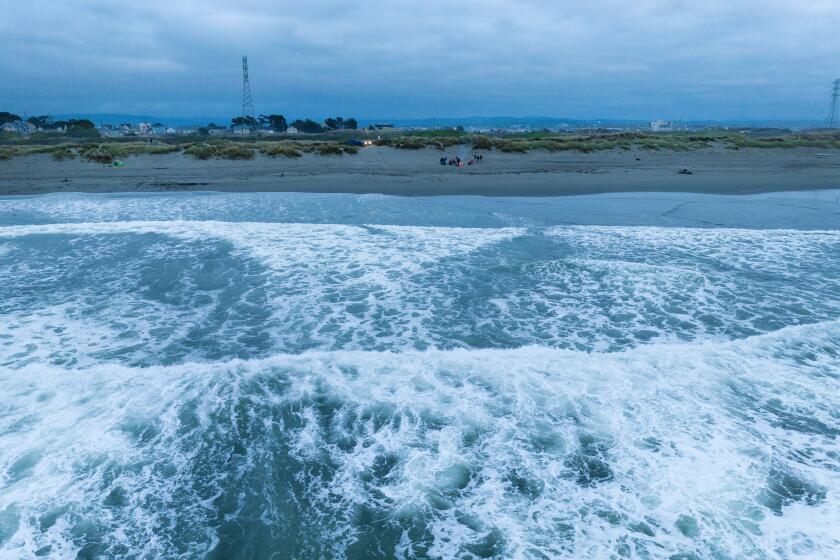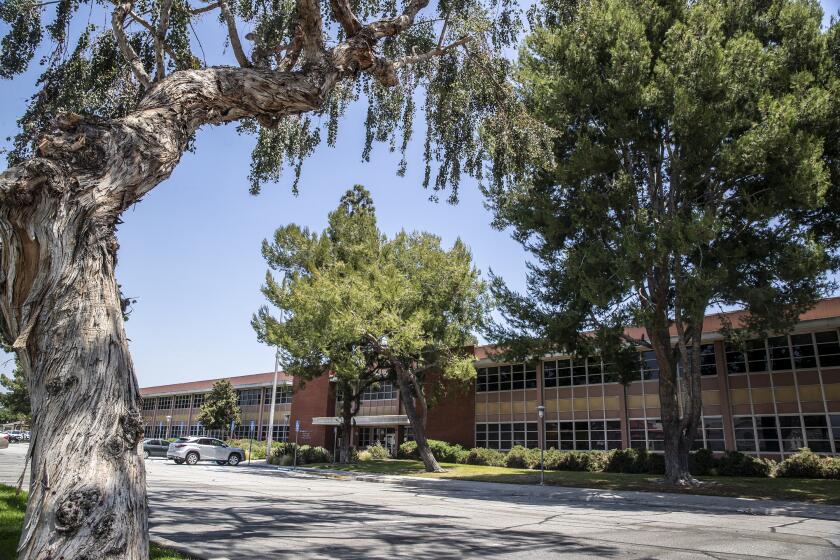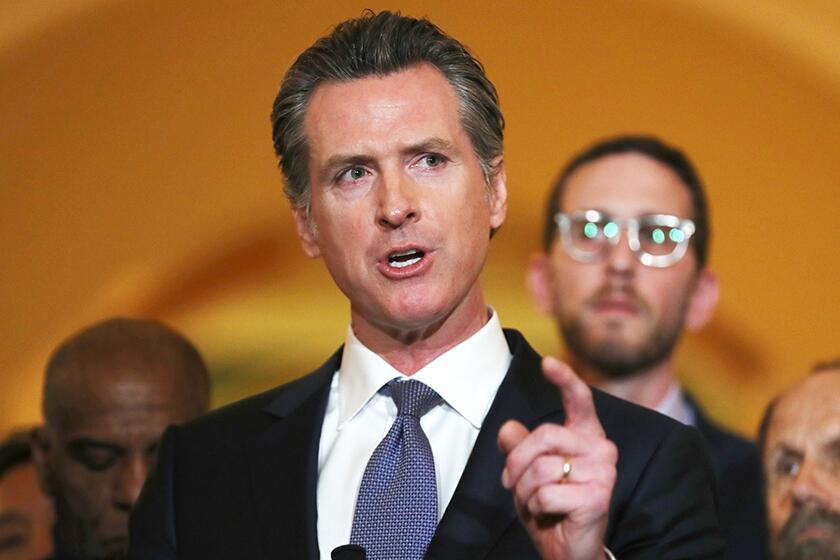Water reform that isn’t
- Share via
The Sacramento-San Joaquin River Delta, one of the biggest sources of Southern California’s water, is the largest estuary on the West Coast. By all accounts, the delta, which feeds into San Francisco Bay, is also one of the most endangered ecosystems in the United States. Water quality standards are routinely violated, and several of its fisheries, including the once prolific run of chinook salmon, are hovering on the brink of extinction.
Scientists have conclusively identified diversion of freshwater away from this estuary as one of the major causes of its collapse. In fact, the state of California recently admitted that it has granted rights to divert more than eight times as much water as actually exists.
Now the Legislature is saying it will “reform” the California water system and cure all of its ills with a package of bills that is expected to be up for a vote soon. The package of solutions -- supported by the governor, Sen. Dianne Feinstein, legislative leaders including state Senate President Pro Tem Darrell Steinberg, and numerous water districts, including our own Metropolitan Water District -- looks remarkably similar to a water plan offered in the late 1970s. That plan was rejected by the public in the early ‘80s.
Back then, the main feature of the proposal was the peripheral canal -- in the new plan that is termed an “alternative conveyance device” -- but the bottom line is that California’s elected leaders are looking to replumb California to solve an ongoing water scarcity crisis, while largely paying lip service to what should be done: conservation, rainwater capture and use and water recycling. Though well-intentioned, what they have proposed so far falls far short of a fix, not only for the delta ecosystem but for Southern California. The state needs to realize that there are faster and more cost-effective, more job-producing and more environmentally beneficial ways to meet California’s current and future water needs.
Replumbing the state is not a short-term solution -- it will take at least a decade to complete. On top of that, in the long term, importing water to Southern California will become less and less sustainable. As the climate changes and the population grows, we must identify and implement cost-effective, climate-resilient, energy-efficient and sustainable techniques to supply and manage our water. Instead, the delta legislation package is setting us up to invest in new infrastructure that only commits us further to an antiquated water system.
Although the package includes water conservation, its measures would not require agriculture, which uses over 70% of all developed water, to conserve a drop, let alone move away from growing such water-intensive crops as cotton, barley and rice. Even urban areas would only be required to prepare plans to meet a 20% conservation goal.
Real reform would include mandating conservation and the statewide water metering required to enforce it. Successful reform would also include water-recycling and rainwater-use targets tied to overall use in the urban and agricultural sectors and per capita use. On a per capita basis, Californians currently use about 175 gallons of potable water per day (about 135 gallons in the city of Los Angeles), and with increased use of recycled water and captured rainwater, we should be able to reach a per capita use of 100 gallons of potable water per day by 2020: a volume far above the per capita use in nearly the entire developed world.
California is the only state that does not have some form of statewide groundwater management and regulation, even though groundwater supplies over a third of all the water used here. In some regions of the state, 90% of potable water comes from groundwater. Despite the valiant efforts of state Sen. Fran Pavley (D-Agoura Hills), the delta legislation package does not even require groundwater use to be accurately reported, much less managed or monitored for quality.
As important as the delta estuary is ecologically, you would think that the proposed legislation would require enforceable standards to ensure that it received sufficient freshwater to support its complex food chains. But instead this package calls only for “determinations” -- goals -- that would have no force or effect under law. Nor are there guarantees that the salmon would be protected. Unenforceable goals and voluntary measures helped get California into a water crisis in the first place.
As to the fundamental issue of over-allocation, the bills reportedly will “look” at the dysfunctional water-rights system, but again, that doesn’t guarantee real reform.
Increased water recycling, enforced water-quality standards, groundwater cleanup and management, state-of-the-art water conservation and local storm-water capture are the solutions for sustainable and equitable water management in the 21st century.
These are the best ways to provide water supply relief and stability to the state. Asking Californians to support yet another multibillion-dollar plan, driven by an engineered solution to our water crisis, is disingenuous at best and destructive to California’s economic and environmental future at worst. The sooner the Legislature and the governor realize this, the sooner we will solve the problems of the delta and California’s antiquated water system.
More to Read
Sign up for Essential California
The most important California stories and recommendations in your inbox every morning.
You may occasionally receive promotional content from the Los Angeles Times.










